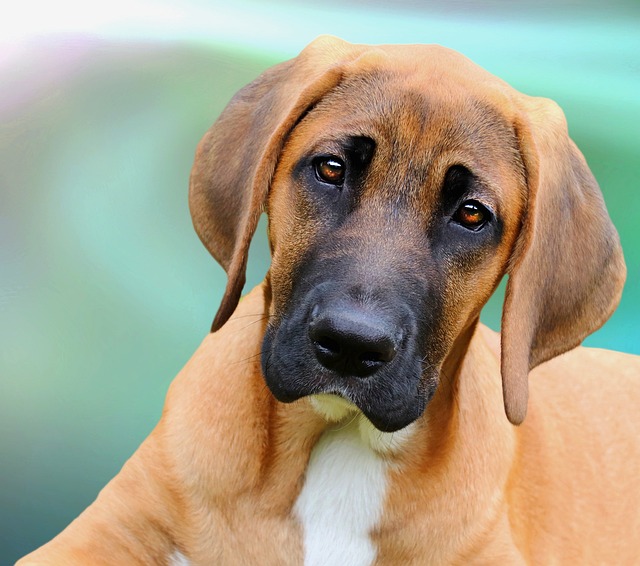


The Broholmer is a large and powerful dog breed originally from Denmark, often referred to as the Danish Mastiff. Known for its imposing presence and gentle nature, the Broholmer is an affectionate and loyal companion. This breed was originally bred for guarding estates and livestock, making it a protective yet calm dog. Though they are large and muscular, Broholmers are typically friendly and well-mannered with their family members. They make excellent family pets for homes with space, and their calm demeanor and protective instincts make them ideal watchdogs.
The Broholmer's history can be traced back to the 16th century, where it was originally used for guarding estates, hunting large game, and protecting livestock in Denmark. It is believed to be a descendant of the Molossian dogs brought to Denmark by the Romans. The breed was popular among Danish nobles and used to guard their estates, particularly due to its strength and size. The Broholmer nearly went extinct in the 20th century due to changing farming practices and a decline in demand for guard dogs. However, in the late 20th century, efforts to revive the breed were successful, and today the Broholmer is recognized as a national treasure of Denmark. Despite its rarity outside of Denmark, the breed is still prized for its gentle nature and strong protective instincts.
The Broholmer is a large, muscular dog with a robust and imposing presence. Males typically stand between 28 to 32 inches at the shoulder, while females are slightly smaller at 26 to 30 inches. The breed's weight can range from 110 to 150 pounds, making it a true giant among dog breeds. The Broholmer's coat is short and dense, usually fawn, golden, or brindle, with a black mask around the face. The breed has a broad head, deep-set eyes, and large, erect ears that give it a dignified and commanding appearance. Its thick tail is usually carried low and has a slight curve. Despite its size and strength, the Broholmer's calm and gentle demeanor makes it an approachable and friendly dog.
The Broholmer is known for its calm and steady temperament. Although it is a large and powerful dog, it is generally gentle and affectionate with its family. This breed forms strong bonds with its owners and is particularly loyal and protective of them. Broholmers are known to be good with children, making them excellent family pets. However, due to their protective instincts, they may be wary of strangers and can be reserved around unfamiliar people. Early socialization and training are essential to ensure that they develop into well-rounded dogs. The Broholmer is not overly aggressive, but it will protect its home and family if it perceives a threat. Despite their size, Broholmers tend to be quiet and not overly vocal, although they may bark to alert their owners to unusual activity.
Although the Broholmer is a large dog, it does not require an excessive amount of exercise. A moderate amount of daily physical activity is sufficient to keep the breed healthy and happy. Regular walks, light jogging, and time spent playing in a secure yard are usually enough to meet their exercise needs. However, due to their size, it is important to avoid overexerting them during young puppyhood, as their joints are still developing. Broholmers enjoy time spent with their family and may not be as independent as some other breeds, so they prefer activities where they can be involved with their owners. They are also quite adaptable to apartment living as long as they receive daily exercise and have access to an outdoor space where they can stretch their legs. Mental stimulation, such as puzzle games or obedience training, is also important for keeping them engaged and content.
The Broholmer is intelligent and generally eager to please, but it can also be independent and somewhat stubborn. As with any large and powerful breed, early socialization and training are crucial to ensuring that the Broholmer grows up to be a well-mannered dog. Positive reinforcement techniques work best, as the breed responds well to praise, treats, and rewards. Broholmers are generally good with children and other pets, especially when raised with them, but early exposure to different people, animals, and environments is necessary for a balanced dog. Consistent training and firm, gentle leadership are important to prevent the breed from becoming too dominant or possessive. Due to their protective nature, it is important to teach the Broholmer how to distinguish between normal situations and genuine threats.
The Broholmer is generally a healthy breed, but like all large dogs, it can be prone to certain health conditions. Some of the most common health issues in Broholmers include hip dysplasia, elbow dysplasia, and bloat (gastric torsion), which are common in large breeds. Regular veterinary check-ups are essential to monitor for these conditions and ensure the overall health of the dog. Broholmers are prone to weight gain if not exercised appropriately, so it is important to maintain a balanced diet and avoid overfeeding. Their short coat is easy to maintain, requiring only regular brushing to remove loose hair. Broholmers do not shed excessively, but some seasonal shedding may occur. Regular ear cleaning and dental care are also important for maintaining the breed’s health.
The average lifespan of a Broholmer is between 8 to 12 years. With proper care, including regular veterinary visits, a healthy diet, and sufficient exercise, many Broholmers live a long and fulfilling life. Larger breeds typically have shorter lifespans, but a Broholmer that receives proper care and attention can remain healthy and active into its senior years.
© copyright Dog Compendium 2024 - 2025